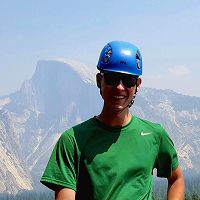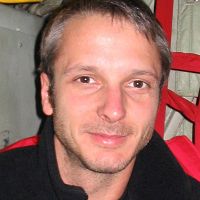Callahan et al., 2016
Using Cosmogenic and U-Series Nuclides in Stream Sediment to Test Hypotheses About Mountain Landscape Evolution.
Callahan, R., Riebe, C., Dosseto, A. (2016)
Goldschmidt Abstracts. Yokohama, Japan
-
Sierra, GRAD STUDENT
-
Sierra, INVESTIGATOR
-
Luquillo, Sierra, COLLABORATOR
Abstract
Cosmogenic nuclides in stream sediment have been widely used to measure erosion rates averaged over millenial timescales. Stream sediment can also reveal both the timescale and the relative importance of physical and chem-ical weathering in landscapes, when U-series nuclides are measured in the bulk sediment. Here we show how 238U, 234U, 230Th and cosmogenic 10Be in sediment can be combined into a potentially powerful geochemical tool for testing hypotheses about landscape evolution. Our analysis focused on 30 catchments underlain by granitic bedrock in the southern Sierra Nevada, California. We chose our study sites to test two longstanding hypotheses about landscape evol-ution in the region. The first hypothesis is that the “stepped topography” of the region results from differential chemical weathering, in which relatively steep, soil-free steps erode more slowly than more gentle soil-mantled treads due to exposure of bare bedrock on the steps, which resist chemical weathering. Our 10Be data show the opposite: steps are eroding as much as three times faster than the treads across our catchments. Moroever, contrary to the hypothesis, Useries measurements suggest that physical erosion dominates over chemical weathering on many of the treads. The second hypothesis is that delamination of a dense crustal root has prompted relief growth in the Kings River drainage and relief decline in the the adjacent San Joaquin drainage due to differential uplift. Although detritial thermochronometry from previous work is consistent with this hypothesis, our measurements of cosmogenic and U-series nuclides in sediment show no significant difference in erosion rates or activity ratios between the two drainages. We cast our analyses in the context of other paired measurements of cosmogenic and Useries nuclides from around the world and develop a framework for an improved understanding of landscape evolution.
Citation
Callahan, R., Riebe, C., Dosseto, A. (2016): Using Cosmogenic and U-Series Nuclides in Stream Sediment to Test Hypotheses About Mountain Landscape Evolution . Goldschmidt Abstracts. Yokohama, Japan.
Explore Further



